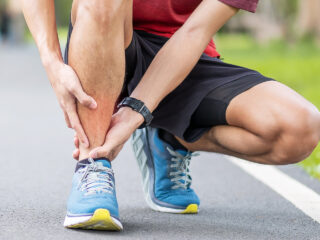Written by Andrew Bottega
In the past few years, recreational running for fitness and health has blown up. Whether it be local park runs at Lake Joondalup, Woodbridge or Whitfords Nodes, Fun Runs, City to Surf, Perth running festivals, trail runs or just casual running, it seems that more and more people are lacing up their shoes and getting out for a jog.
I’m not embarrassed to admit I’ve been a part of this trend – and loved every minute. The lockdown re-ignited my passion for running, after not having done any formal running since track and cross-country teams in high school.
Having access to some fantastic running experts, in combination with working primarily with high level footy, soccer, cricket players and runners outside of the clinic, I’ve often found myself nerding out on this topic; discussing, researching, and trialling various types of running shoes.
Anecdotally, I’ve seen ASICS and Nike dominate the running industry in Australia for many years, however recently brands like HOKA, Puma, Adidas, Saucony, ON, New Balance and Under Armour amongst others have brought out some amazing shoes.
Hence, selecting your first (or future) pair of shoes can be a daunting task. With an abundance of different brands, models, colours and styles of shoes.
Hopefully the following guide can be helpful in getting you into a great pair of shoes!
Pronation
- Shoes typically come in either ‘Neutral’ or ‘Overpronation’.
- Pronation refers to how your foot contacts the ground, or the angle of your foot at ground initial contact. Overpronators will land on the outside of their heel, then roll inward excessively, transferring weight to the inner edge as opposed to the ball of the foot. Often this shoe is suitable for people with low foot arches. The ASICS Kayano is a common choice for these type of runners.
- Neutral runners have a more even push off, higher arches and a straighter foot ankle, and will use a shoe like the Nike Air Pegasus.
Type of Running Training
- Shoes have different specs designed for different types of runs. Heel drop / stack height, midsole design, shoe weight and support all vary from shoe to shoe.
- Newer racing shoes such as the ASICS Metaspeed + Nike VaporFly have introduced a full-length carbon plate (commonly called ‘supershoes’) to allow for a firmer underfoot feeling, and subsequent increased ability to run at higher paces.
- The HOKA Bondi however, has a much softer, cushioned feel to allow for comfortable longer distances with slower / recovery runs.
- Trail shoes have also become increasing popular for trail events; with grippier underfoot to allow for safer terrain navigating. A popular choice is the Saucony Peregrine’s.
Cross-Trainers
- With the ongoing popularity of cross-fit and HIIT training, many customers are looking for an ‘all-rounder’ shoe; with a firmer and more stable underfoot for heavy lifts, whilst still maintaining some cushioning for the run component of their workouts.
- The Rhebok Nano’s or Nike Metcon’s have commonly be the shoe of choice for above athletes.
Running Experience and Individuality
- Like anything in the fitness industry, individualisation is paramount!
- Different shoes feel better for different people. I often hear people buying shoes based on the recommendation of a family member or friend, with completely different genetics, goals or fitness levels.
- People simply have different goals, ranging from completing weekly walks, to completing your first ever non-stop run, to running a fast marathon – and your choice of footwear should reflect this.
Takeaways
- There’s many factors to consider when buying a new shoe, but don’t let the plethora of choice gatekeep you from getting started.
- Do some research and speak to someone with some running shoe experience, our friends at the Running Centre, a trusted Podiatrist and/or Physio.
- Evidence regarding running shoe helping injury reduction is grey. There are far more important factors for injury prevention than simply shoe choice. Give adequate attention your training volume, leg strength and potentially running technique to minimise chances of overuse injuries.
- Most importantly, have fun and enjoy the ride.
Feel free to pop into Darch Physio if you have any questions about running or running shoes!




